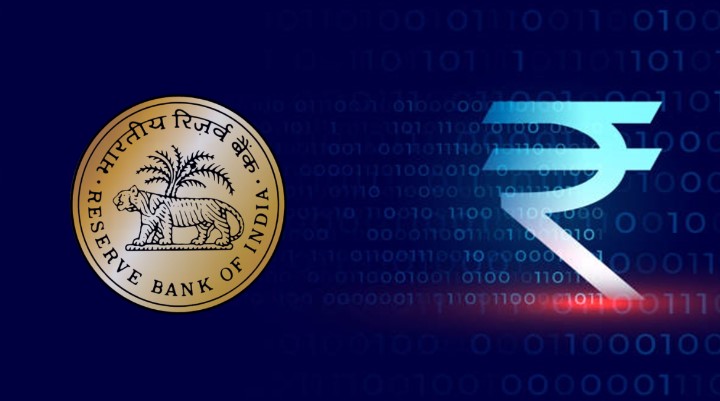
E-rupee likely to bring down cost of cross-border payments
- मार्च 14, 2023
- 0
The introduction of a central bank digital currency (DBDC) in cross-border remittances is likely to bring down significantly the cost of transaction for customers. At present, customers have to pay a fee to the bank. This is percentage or a fixed amount of money transferred. The fee is applicable to both inward and outward remittances.
The RBI has defined CBDC as a legal tender issued by a central bank in a digital format. It is the same as a sovereign currency and is exchangeable one-to-one on a par (1:1) with fiat currency. Importantly, the CBDC would be a liability of the central bank, and not of a commercial one.
The present state-of-the-art payment systems of India are affordable, accessible, convenient, efficient, safe, and secure and are a matter of pride for the nation. However, cross-border payment is an area especially ripe for change and could benefit from new technologies.
The cost of sending remittances to India, therefore, assumes critical relevance, especially in view of the large Indian diaspora spread across the world and from the point of view of potential (mis) use of informal/illegal channels.
According to bankers, the cost of sending money overseas ranges between Rs.500 and Rs. 750 for Rs.1 lakh. For inward remittances, the cost of sending $100 is around $5-7.
The introduction of CBDC for cross-border remittances can bring down costs substantially. Some nations are already testing CBDC for such purposes.
The Bank for International Settlements (BIS) recently concluded a pilot project called mBridge (also known as Multiple CBDC or mCBDC) to facilitate $22 million real-value cross-border transactions involving the central banks of Hong Kong, Thailand, China, the United Arab Emirates, the BIS, along with 20 commercial banks from those regions.
The group of 20 nations has also made enhancing cross-border payments a priority and endorsed a comprehensive programme to address key challenges to cross-border payment. But these are high costs, low speed, limited access, insufficient transparency, and friction.
CBDC will be faster, cheaper, more transparent, and more inclusive cross-border payment services, would deliver widespread benefits for citizens and economies worldwide, supporting economic growth, international trade, global development, and financial inclusion.
BIS had published the results from a survey of central banks in June 2021, which noted that CBDCs could ease current friction in cross-border payments – more so if central banks factored in an international dimension into the CBDC design at the very outset.
ई-रुपये से सीमा पार भुगतान की लागत में
कमी आने की संभावना है
सीमा पार प्रेषण में एक केंद्रीय बैंक डिजिटल मुद्रा (DBDC) की शुरूआत से ग्राहकों के लिए लेनदेन की लागत में काफी कमी आने की संभावना है। फिलहाल ग्राहकों को बैंक को शुल्क देना पड़ता है। यह प्रतिशत या हस्तांतरित धन की एक निश्चित राशि है। शुल्क आवक और जावक दोनों प्रेषणों पर लागू होता है।
आरबीआई ने सीबीडीसी को एक केंद्रीय बैंक द्वारा डिजिटल प्रारूप में जारी कानूनी निविदा के रूप में परिभाषित किया है। यह एक संप्रभु मुद्रा के समान है और सममूल्य (1ः1) पर एक-से-एक फिएट मुद्रा के साथ विनिमेय है। महत्वपूर्ण रूप से, CBDC केंद्रीय बैंक की देनदारी होगी, न कि वाणिज्यिक बैंक की।
भारत की वर्तमान अत्याधुनिक भुगतान प्रणालियाँ सस्ती, सुलभ, सुविधाजनक, कुशल, निरापद और सुरक्षित हैं और राष्ट्र के लिए गर्व का विषय हैं। हालांकि, सीमा पार भुगतान, परिवर्तन के लिए विशेष रूप से परिपक्व क्षेत्र है और नई तकनीकों से लाभान्वित हो सकता है।
विशेष रूप से दुनिया भर में फैले भारतीय प्रवासी और अनौपचारिक/अवैध चैनलों के संभावित (गलत) उपयोग के दृष्टिकोण से भी भारत में धन प्रेषण भेजने की लागत, महत्वपूर्ण प्रासंगिक हो जाती है।
बैंकरों के मुताबिक, एक लाख रुपये के लिए विदेश में पैसा भेजने की लागत 500 रुपये से 750 रुपये के बीच है। आवक प्रेषण के लिए, $100 भेजने की लागत लगभग $5.7 है।
सीमा पार प्रेषण के लिए CBDC की शुरूआत से लागत में काफी कमी आ सकती है। कुछ देश ऐसे उद्देश्यों के लिए पहले से ही सीबीडीसी का परीक्षण कर रहे हैं।
बैंक फॉर इंटरनेशनल सेटलमेंट्स (BIS) ने हाल ही में mBridge (मल्टीपल CBDC या mCBDC के रूप में भी जाना जाता है) नामक एक पायलट प्रोजेक्ट पूरा किया है, जो हांगकांग, थाईलैंड, चीन, संयुक्त अरब अमीरात BIS, के केंद्रीय बैंकों और उन क्षेत्रों के 20 वाणिज्यिक बैंकों के साथ $22 मिलियन के वास्तविक-मूल्य वाले क्रॉस-बॉर्डर लेनदेन की सुविधा प्रदान करेगा।
20 देशों के समूह ने भी सीमा पार भुगतान को प्राथमिकता दी है और सीमा पार भुगतान की प्रमुख चुनौतियों का समाधान करने के लिए एक व्यापक कार्यक्रम का समर्थन किया है। लेकिन ये उच्च लागत, कम गति, सीमित पहुंच, अपर्याप्त पारदर्शिता और टकराव वाले हैं।
CBDC तेज, सस्ता, अधिक पारदर्शी, और अधिक समावेशी सीमा पार भुगतान सेवाएं दुनिया भर के नागरिकों और अर्थव्यवस्थाओं के लिए व्यापक लाभ प्रदान करेंगी, और आर्थिक विकास, अंतर्राष्ट्रीय व्यापार, वैश्विक विकास और वित्तीय समावेशन का समर्थन करेंगी।
बीआईएस ने जून 2021 में केंद्रीय बैंकों के एक सर्वेक्षण से परिणाम प्रकाशित किए थे, जिसमें कहा गया था कि सीबीडीसी सीमा पार भुगतान में मौजूदा टकराव को कम कर सकते हैं – खासकर अगर केंद्रीय बैंक सीबीडीसी डिजाइन में शुरू से ही एक अंतरराष्ट्रीय आयाम में तथ्य रखते हैं।
































































